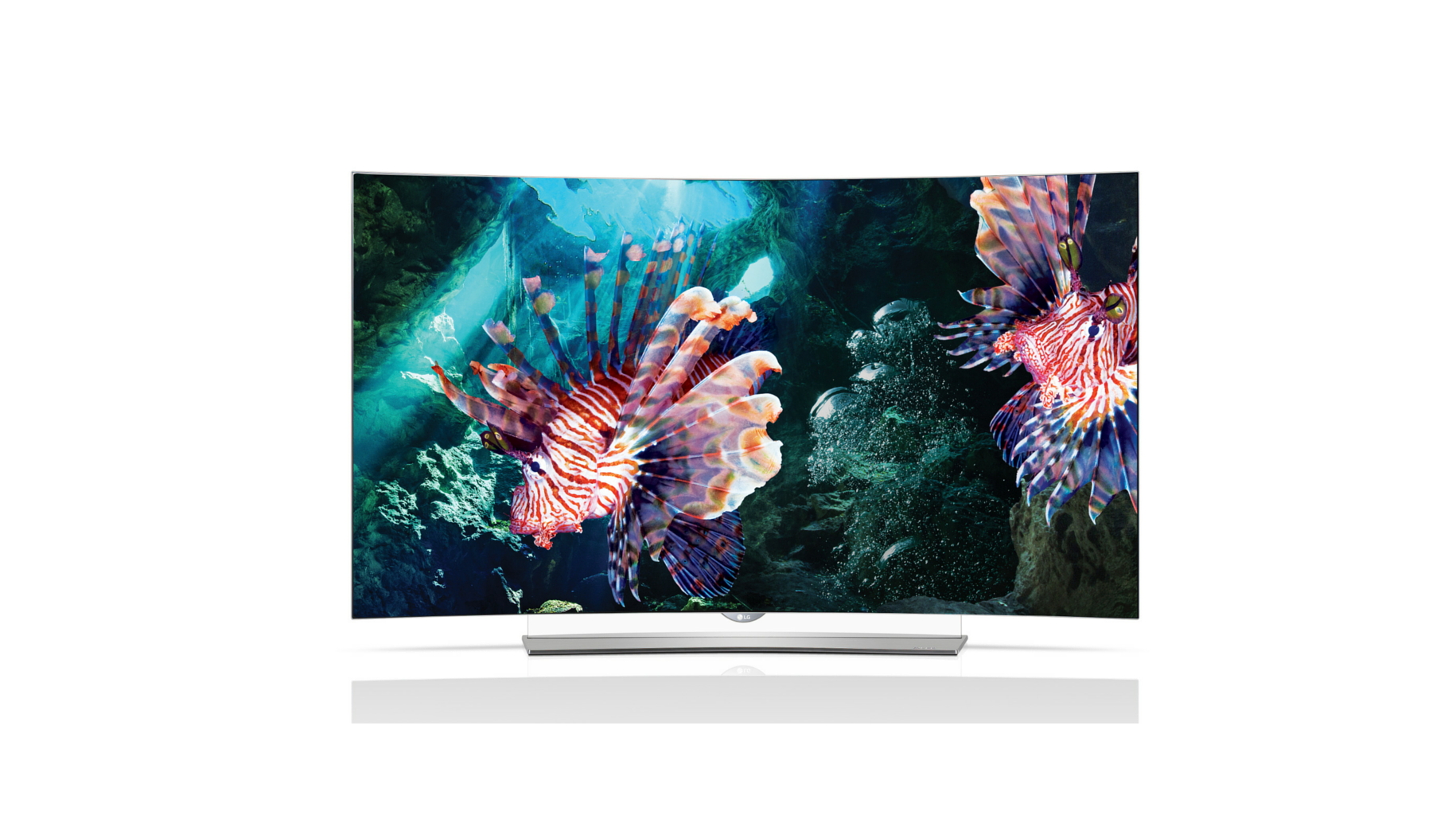Why you can trust TechRadar
If you're a "I prefer plasma" kinda person and you're not yet lusting after OLED, you've got it all wrong.
OLED takes the brilliant fluidity and ultra-blacks of plasma and surpasses them, and nowhere more impressively than on the 55EG960V.
We liked
Self-lighting pixels are the future, as proved by the 55EG960V's spotless colours, awesome blacks, bright, pure whites and all-round utterly gorgeous images.
4K detail is mesmerising while even standard definition sources look clean and crisp. Self-lighting they may be, but it's when those pixels completely switch off that this OLED TV really stands out next to an LED TV.
The blueish blacks seen on LED TVs are banished, replaced by total, jet black that makes watching the 55EG960V in a blackout nothing short of life-changing if you're a home cinema nut. Returning to the judder, motion blur and crushed blue-ish backgrounds of LED TVs is not going to be easy.
We disliked
As well as being bereft of some key catch-up TV apps – at least on the UK model – the 55EG960V is fitted with LG's own webOS, which will not appeal to all users.
It is relatively intuitive, but it has a steep learning curve and is too clever for its own good; finding basic TV features can be long-winded. The 'magic' pointer remote will also have limited appeal.
There's little else to complain about save for the slightly plastic look to the transparent column that affixes the 55EG960V to the otherwise sleek, curved desktop stand.
But three HDMIs though does seem poor value; for this kind of money I expect five or six.
Verdict
If OLED has a sweet-spot, it's the 55EG960V.
It uses those 33 million self-lighting pixels exceptionally well, achieving outstanding images where light becomes a magical medium – can we praise it any higher?
Motion artefacts are few when watching the fluid action sequences, with film judder forgotten, too.
However, what we liked most about the 55EG960V was it equal treatment of various different sources were all forced to choose between. Native 4K footage from Netflix 4K looks stunning, of course, but so do Blu-ray discs and HDTV channels. While they lack the punchy detail of high def and above sources, even standard definition fare from DVDs and regular TV channels is given a clean and colourful upscale by the surprisingly forgiving 55EG960V.
Is it better than the class-leading LED TVs?
Absolutely – the black levels and viewing angles in particular are light years ahead. Is it as good value? That's a completely different matter, but it underlines what our biggest hope is for OLED; if LG can make it more affordable this technology has the world at its feet.
Though the reflection-free curve causes no problems, it's only there to get the 55EG960V more attention in-store because, as a technology, OLED is difficult to show-off. You can't demonstrate its amazing black levels – something that makes all the difference to a TV picture – on an advert watched on an LED TV.
LG is now trying exactly that, but what's the point?
However, LG's real problem is that no other brand is promoting OLED, for obvious reasons, so awareness of it is way below that of curved TVs. There's no industry clamour, no conversation about OLED. Why is that bad? Because OLED is the best thing that's ever happened to home cinema – and the 55EG960V is the proof.
Also consider
Is there anything can challenge the 55EG960V? Other OLED TVs – manufactured only by LG, remember – include the cheaper, though only Full HD 55EC930V and the pricer 65EC970V. However, 55-inch LED TVs are myriad; the Samsung UE55JU6400 offers 4K for a third of the price, but not 3D, while even the larger 65-inch LG 65UF850V is a fraction of the price.
Perhaps the closest challenger will be the Samsung UE55JS9500, which offers HDR, though its value is questionable compared to OLED tech. However, picture quality on these TVs can't match the 55EG960V.
They barely even come close.
Jamie is a freelance tech, travel and space journalist based in the UK. He’s been writing regularly for Techradar since it was launched in 2008 and also writes regularly for Forbes, The Telegraph, the South China Morning Post, Sky & Telescope and the Sky At Night magazine as well as other Future titles T3, Digital Camera World, All About Space and Space.com. He also edits two of his own websites, TravGear.com and WhenIsTheNextEclipse.com that reflect his obsession with travel gear and solar eclipse travel. He is the author of A Stargazing Program For Beginners (Springer, 2015),

